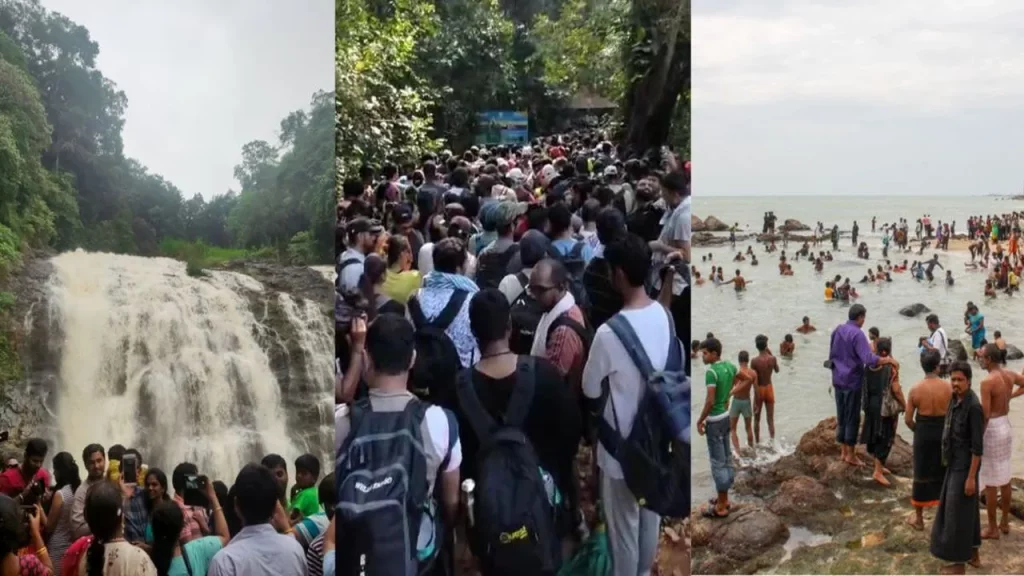Cleanliness plays a crucial role in enhancing the appeal and sustainability of Indian tourism. India, known for its rich cultural heritage, diverse landscapes, and historical monuments, attracts millions of domestic and international tourists each year. Here are key reasons why cleanliness is essential in Indian tourism:
1. Enhances Tourist Experience
- Clean environments, including well-maintained tourist spots, hotels, and public facilities, significantly improve the overall experience for visitors.
- A clean destination creates a welcoming atmosphere and leaves a lasting positive impression on tourists.
2. Protects Cultural and Historical Monuments
- India is home to iconic landmarks like the Taj Mahal, Qutub Minar, and Ajanta-Ellora caves. Litter, pollution, and neglect can damage these irreplaceable structures.
- Regular cleaning and maintenance preserve these treasures for future generations.
3. Promotes Public Health
- Cleanliness reduces the spread of diseases, ensuring the safety and well-being of tourists and local communities.
- Maintaining hygienic practices in restaurants, hotels, and public spaces helps to build trust with tourists.
4. Boosts Reputation and Competitiveness
- Clean destinations are more likely to attract repeat visitors and positive word-of-mouth recommendations.
- A strong reputation for cleanliness can position India as a world-class tourist destination, competing with global markets.
5. Supports Sustainability
- Cleanliness efforts, such as waste segregation, recycling, and minimizing plastic usage, align with sustainable tourism practices.
- Protecting natural resources like rivers, forests, and beaches ensures long-term ecological balance.
6. Aligned with Government Initiatives
- Campaigns like Swachh Bharat Abhiyan (Clean India Mission) emphasize the importance of cleanliness in public spaces, including tourist destinations.
- States and local authorities have also introduced cleanliness awards and rankings for tourist places, encouraging communities to maintain high standards.
7. Economic Impact
- Cleaner destinations attract more visitors, boosting local economies through increased spending on lodging, food, and activities.
- It also encourages investment in the tourism and hospitality sectors, generating employment.
Why is littering and garbage everywhere widely accepted in India?
Littering and the widespread presence of garbage in India are often attributed to a complex interplay of cultural, systemic, and practical factors. It’s not that littering is explicitly “accepted,” but a range of issues contributes to the challenge:
1. Cultural Norms and Habits
- Historical Practices: Traditionally, biodegradable waste like leaves or food scraps was disposed of in open spaces and naturally decomposed. The shift to non-biodegradable waste (plastics, etc.) hasn’t been matched with changes in disposal habits.
- Public vs. Private Cleanliness: In many Indian households, great importance is placed on keeping personal spaces clean. However, the same level of attention often does not extend to public spaces, sometimes due to a perceived separation of personal responsibility and public responsibility.
2. Systemic Issues
- Insufficient Waste Management Infrastructure: Many areas lack adequate garbage bins, timely collection, or effective waste segregation systems, making proper disposal difficult.
- Overburdened Systems: Cities with rapidly growing populations struggle to keep up with the volume of waste generated.
- Informal Sector Dependence: A significant portion of waste management relies on informal workers (ragpickers), which can lead to inefficiencies and gaps in the system.
3. Lack of Awareness
- Education Gaps: Limited public awareness campaigns or school education on environmental responsibility can contribute to people not understanding the broader impact of littering.
- Normalization of Littering: Seeing garbage in public spaces daily normalizes the behavior, reducing the social stigma associated with littering.
4. Economic and Practical Constraints
- Limited Access: In rural or underserved areas, garbage disposal facilities may not be accessible, leading to indiscriminate dumping.
- Cost of Alternatives: Eco-friendly waste disposal methods or alternatives to plastics are often costlier or less convenient.
5. Enforcement Challenges
- Weak Regulations: While laws like the Swachh Bharat Abhiyan aim to tackle littering, enforcement is inconsistent and penalties are rare.
- Social Tolerance: Authorities and communities often prioritize other pressing issues, leading to a lack of accountability for public cleanliness.
6. Rapid Urbanization
- With increasing urban sprawl and migration, the infrastructure in many cities has not kept pace, leading to an overflow of waste in public spaces.
Positive Signs of Change
Despite these challenges, attitudes towards littering and garbage are evolving. Initiatives like the Swachh Bharat Mission, citizen-led clean-up drives, and increased environmental advocacy are helping to shift perceptions and practices. The younger generation, in particular, is often more environmentally conscious and willing to adopt sustainable habits.
The journey to cleaner public spaces in India will likely require a combination of systemic reforms, widespread education, stronger enforcement, and collective societal responsibility.
Challenges and Way Forward:
- Challenges:
- Lack of awareness and civic responsibility among tourists and locals.
- Inadequate waste management infrastructure in remote or overcrowded destinations.
- Over-tourism leading to excessive waste generation.
- Solutions:
- Awareness campaigns emphasizing the role of cleanliness.
- Strengthening waste management systems and adopting green technologies.
- Encouraging eco-tourism and responsible tourist behavior.
By prioritizing cleanliness, India can maximize its tourism potential while preserving its natural and cultural heritage. Clean environments not only enrich the tourist experience but also foster pride and responsibility among citizens.





